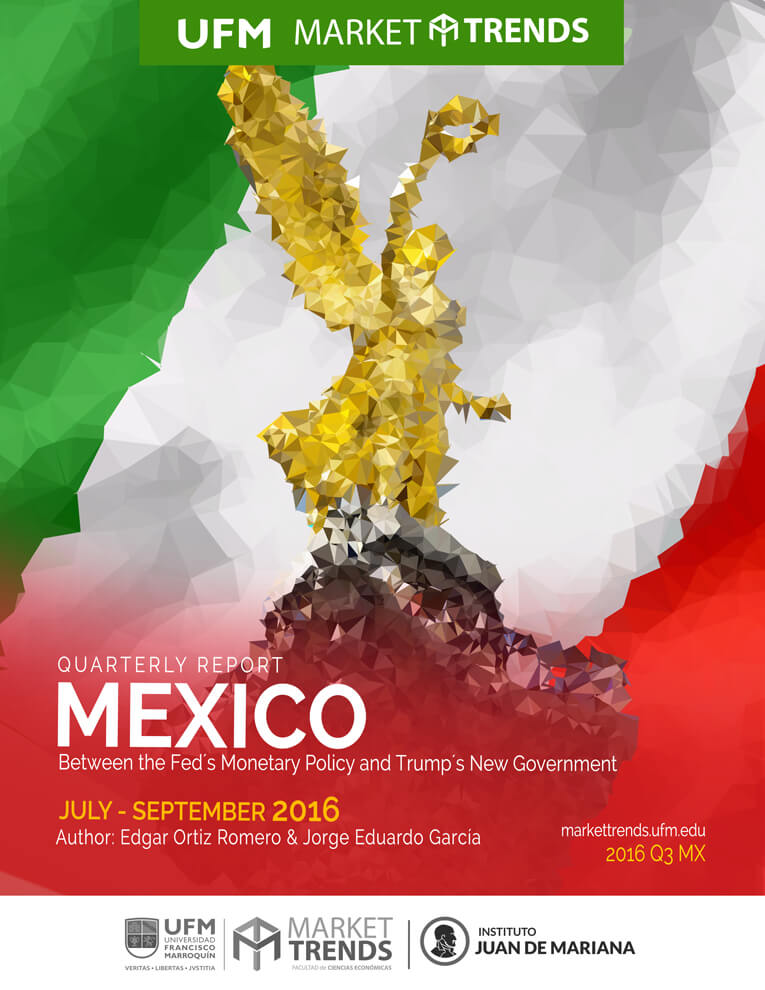Mexico remains in the midst of an exchange rate depreciation that does not seem to end. The Bank of Mexico must face the speculation about the peso caused by Trump’s victory and its international context, and the rise of interest rates by Federal Reserve in December.
For now inflation is controlled, but production prices have increased and seem to anticipate inflation in the near future. Furthermore, the government announced a budget that promises to reverse the growth of public debt, which has increased since 2013.
Contents
- Gross domestic product (GDP)
- Cyclical sector demand
- Employment trends
- Monetary aggregates
- Consumer Price Index (CPI)
- Producer Price Index (IPP)
- Stock Market Prices
- Credit to businesses
- Household credit
- Government credit
- Yield curve spread
- Deficit and debt of GDP
- Balance of payments
Authors
- Edgar Ortiz Romero
Edgar Ortiz has a degree in Law from the Francisco Marroquín University. He holds a master in Austrian Economics at the Rey Juan Carlos University in Madrid. He is the executive director of the Center of Economic and Social Studies (CEES). He is a professor of economics at the Francisco Marroquín University, and he is also an analyst on issues related to the situation at Canal Antigua. He works as an associate lawyer at Estudio Jurídico Rivera.
- Jorge Eduardo García
Jorge is currently completing the second grade of Economics with minor in Finance at the Universidad Francisco Marroquín. He has attended to international seminars from Foundation for Economic Education. He is research intern on Centro de Estudios Económico-Sociales (CEES) and also has collaborated in experiments on Centro Vernon Smith of Experimental economics in UFM.



